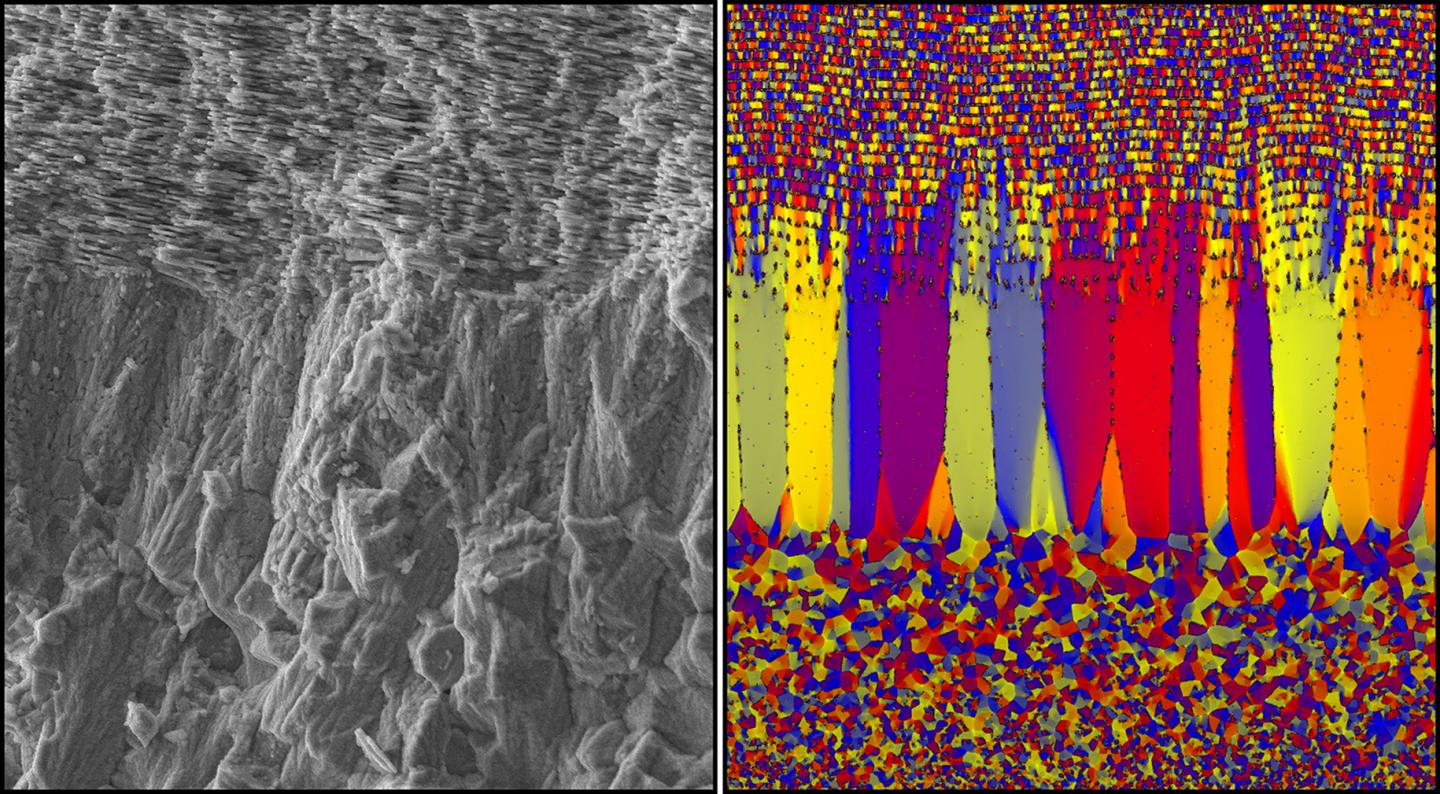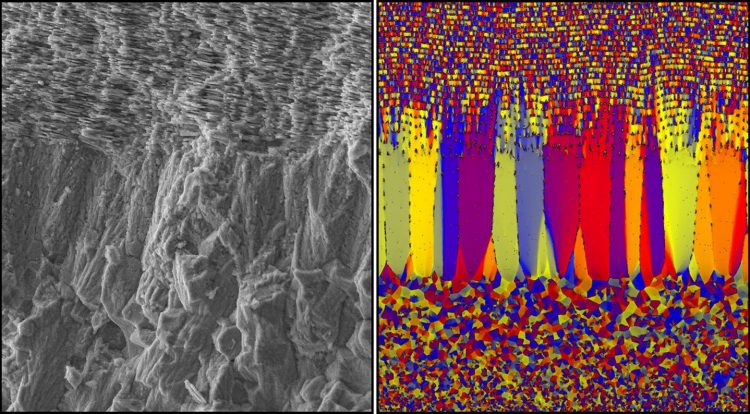New findings about biomineralization in molluscan shells

Credit: © Igor Zlotnikov (B CUBE – Center for Molecular Bioengineering, Technische Universität Dresden, Germany); Tamás Pusztai and László Gránásy (Institute for Solid State Physics and Optics, Wigner Research Centre for…
Molluscan shells consist of a variety of complex mineral-organic composite ultrastructures. Surprisingly, in some cases, shells from distantly related species contain similar morphological motifs on many different length scales, from the nano- to the micro-scale. During the last few decades, significant progress has been made in understanding the key biochemical mechanisms responsible for biogenic mineral formation. However, little is known on how the organisms control the form of the individual mineral building blocks comprising the different shell architectures and consequently, determine the morphology of these species-specific mineral-organic assemblies.
The Zlotnikov research group in collaboration with scientists from the Wigner Research Centre for Physics in Budapest, Hungary now developed a comprehensive experimental and theoretical framework to analytically describe the process of ultrastructural morphogenesis of molluscan shells. Mainly, they demonstrated that the formation of these highly biomineralized tissues is guided by the organisms by regulating the chemical and physical boundary conditions that control the growth kinetics of the mineral phase.
By showing a direct link between physics of materials and the process of biomineralized tissue morphogenesis, the team sheds a new light on the evolutionary aspect of the fabrication of biological materials.
###
Publication:
Crystal growth kinetics as an architectural constraint on the evolution of molluscan shells. Vanessa Schoeppler, Robert Lemanis, Elke Reich, Tamás Pusztai, László Gránásy, and Igor Zlotnikov. PNAS. 2019. http://www.
Media Contact
Dr. Igor Zlotnikov
[email protected]
Related Journal Article
http://dx.





